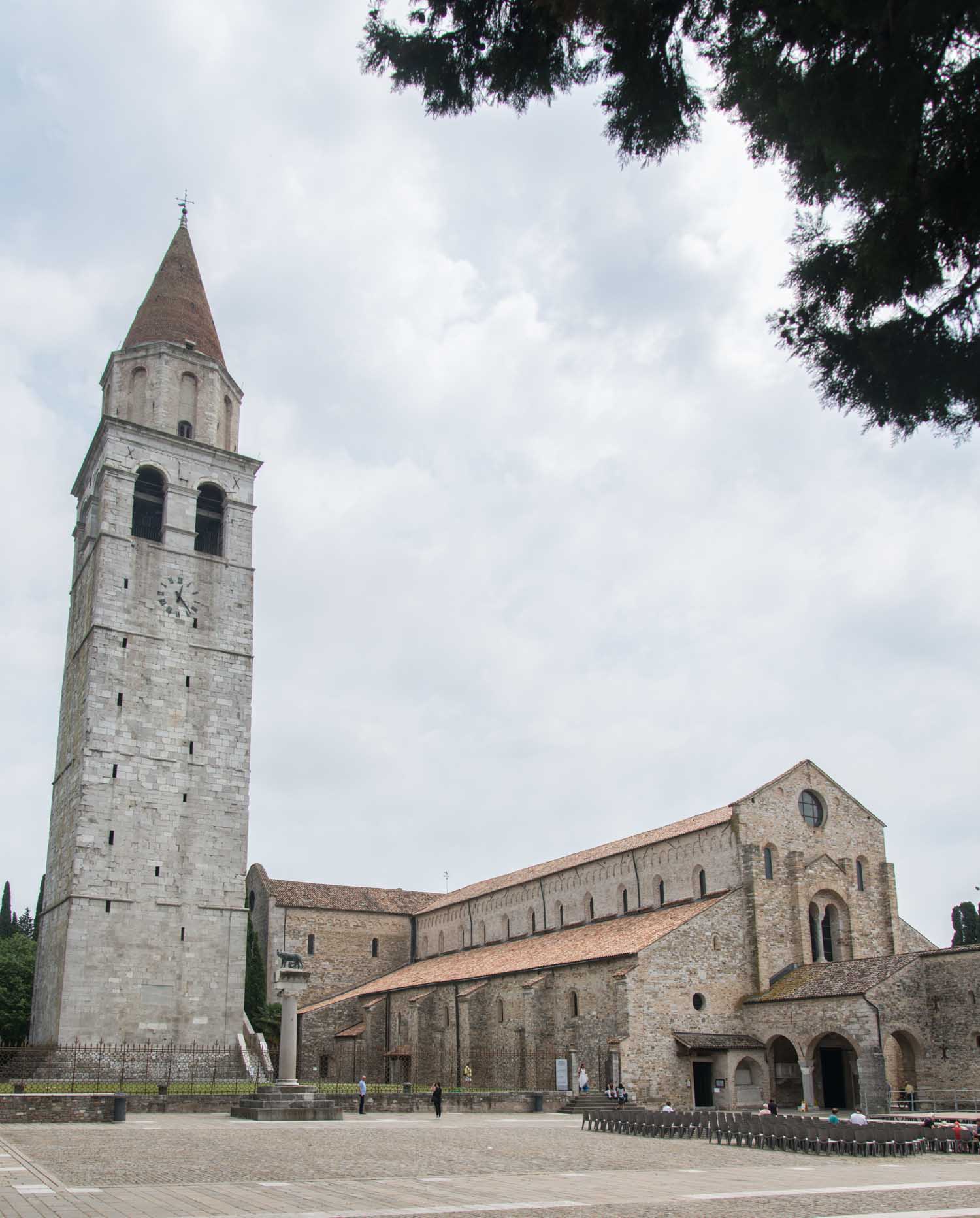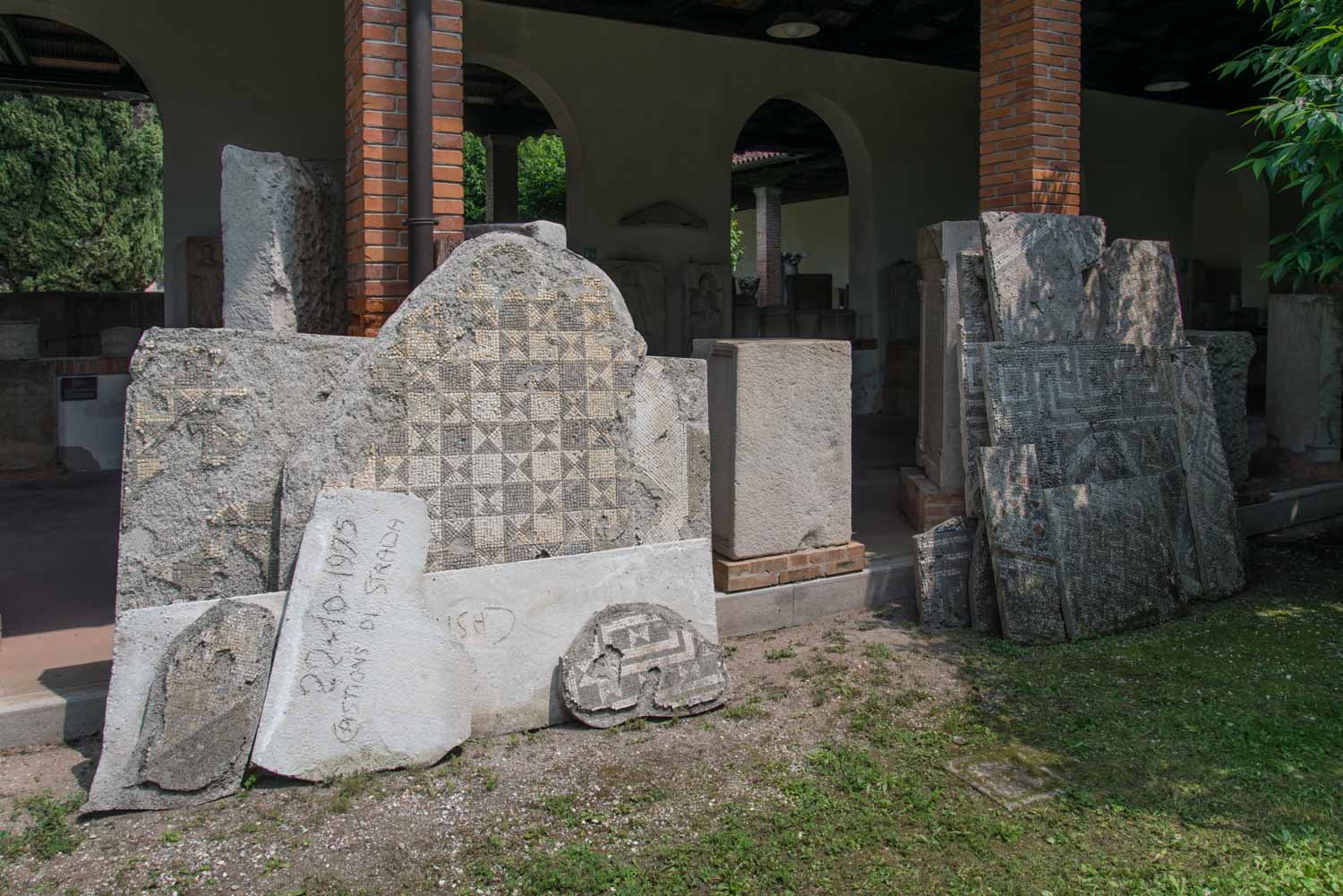As I said yesterday I stumbled across our current location, Aquileia, almost by accident, but what a find and somewhere I don’t think many people know about. It is also, of course, a UNESCO World Heritage site.
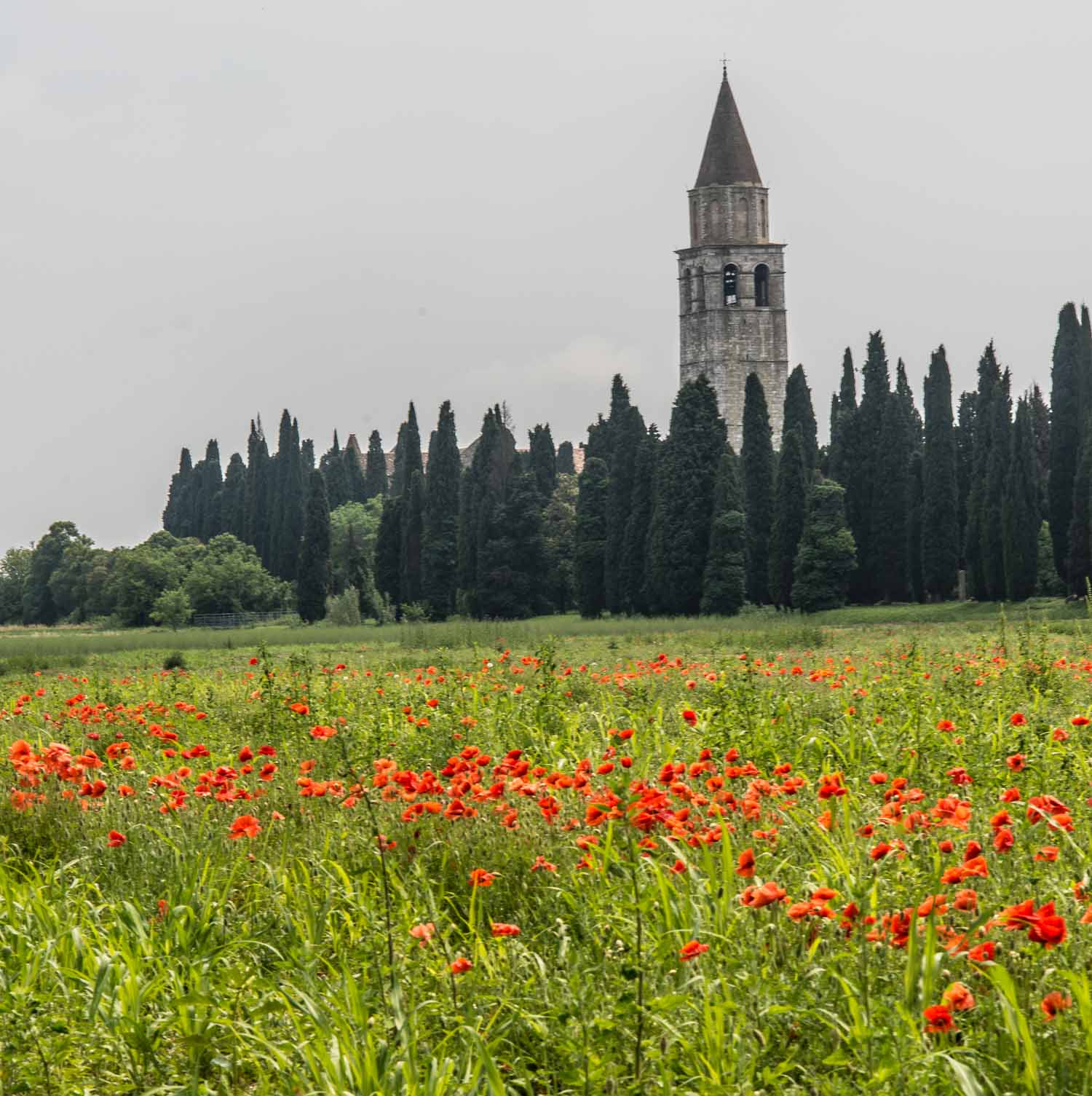
Aquileia, now a very small town, was once a Roman city with a population of over 100,000 people and reckoned to be the 4thmost important Roman town in Italy and 12thin the whole empire. It was originally built in 180BC as a military base as they expanded their empire into the Balkans and to the North East. It rapidly grew into a major trade hub, being at a key point between Italy and its eastern Empire.
After withstanding various sieges from squabbling claimants for the role of Empire and barbarians it was finally pretty much wiped from the face of the earth by Atilla and his Huns in 452 AD. It was so completely destroyed it was said to be afterwards difficult to recognise its original site.

From the point at which Christianity became recognised by Emperor Constantine in 313 AD, Aquileia was also an important centre of Christian worship to the extent that it was the seat of one of the original Patriarchs of the Church, which it retained until 1751.
Just outside our campsite the archeological park begins. Not much recognisable is visible except foundations, because Atilla did such a good job. The port, which was at the time on a large river, have been extensively excavated and the Forum was partially reconstructed following excavation in 1930s. It is the largest Roman city ever excavated, and we could see archeologists carrying excavations on a new section of the city.
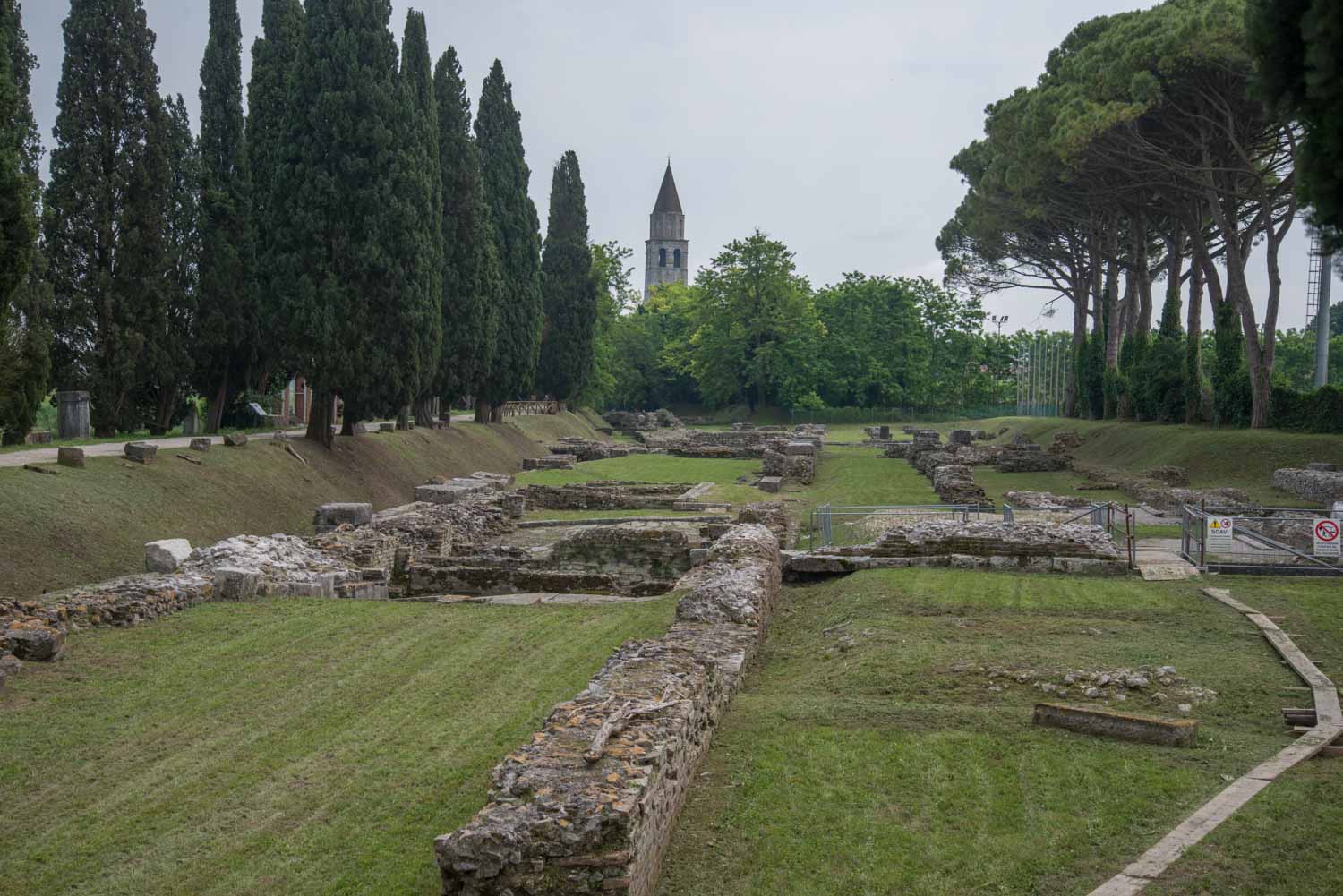
To give you an idea of the city’s size, the distance from the port to the no longer visible Amphitheatre is more than 1.5 km!
We walked along a path lined with excavated inscriptions and carvings of various sorts to the Basilica. This was originally built in the 4thCentury, shortly after Christianity was recognised by the Roman Empire. Atilla razed it to the ground but it was rebuilt, in its current form in the 9thcentury, but the amazing aspect is that the original Basilica’s 4thCentury mosaics survived the city’s sacking and form the floor of the current Basilica.
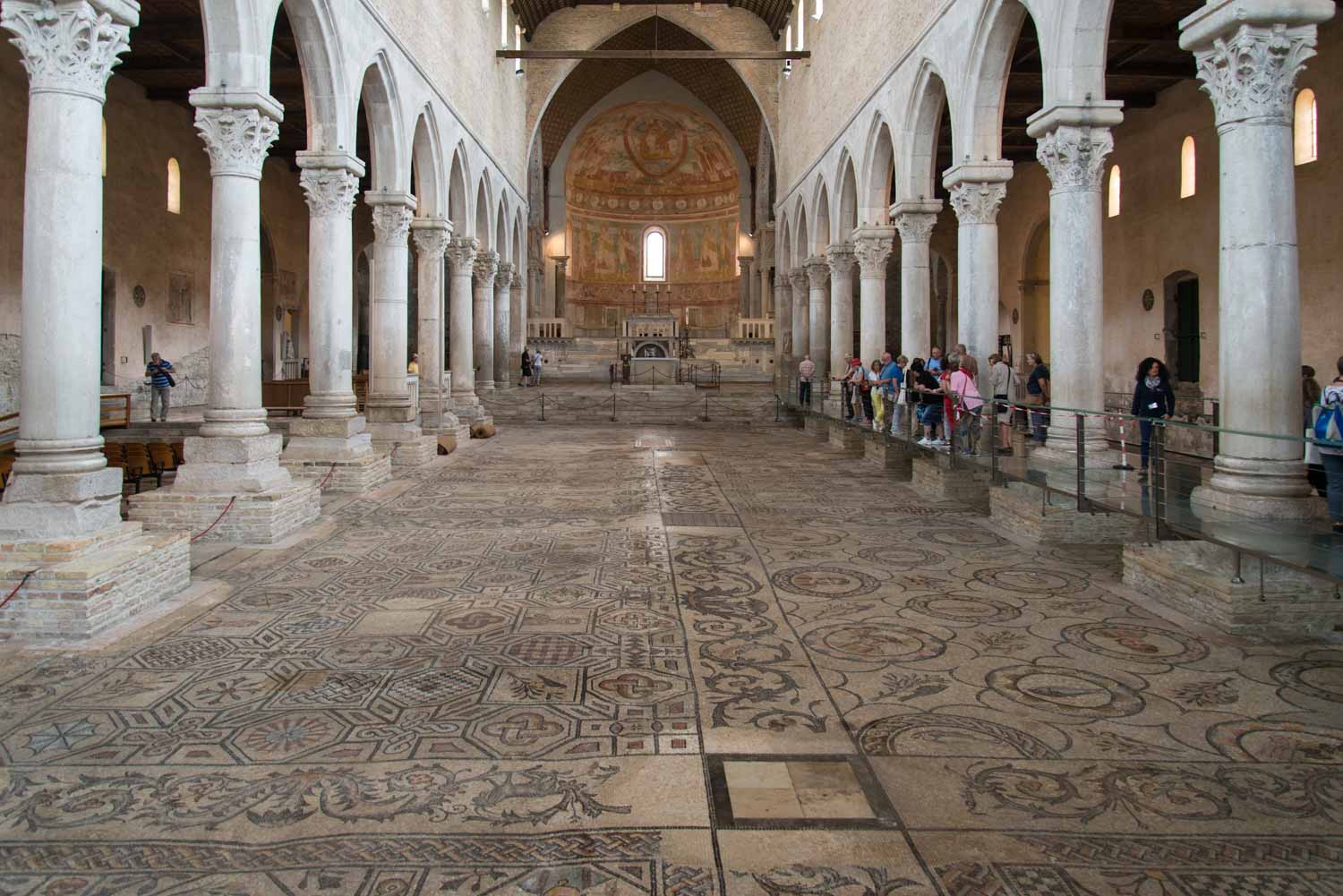
They are the most enormous Roman mosaics we have ever seen. They were apparently used as a teaching aid for early Christians and are full of early Christian symbolism. Some like fishes and fishermen are obvious others are much more obscure, like a Ram, which even when I read the explanation I did not really understand the symbolism.

In addition to the magnificent mosaic floor there are some 11thcentury frescoes behind the altar.

To one side of the Basilica have been uncovered further extensive mosaics which formed part of the original church complex that was not rebuilt and, in fact, the huge later Campanile was just built on top of the old mosaic floor and so you can now see the bell tower’s foundations surrounded by old mosaics. Most unusual.
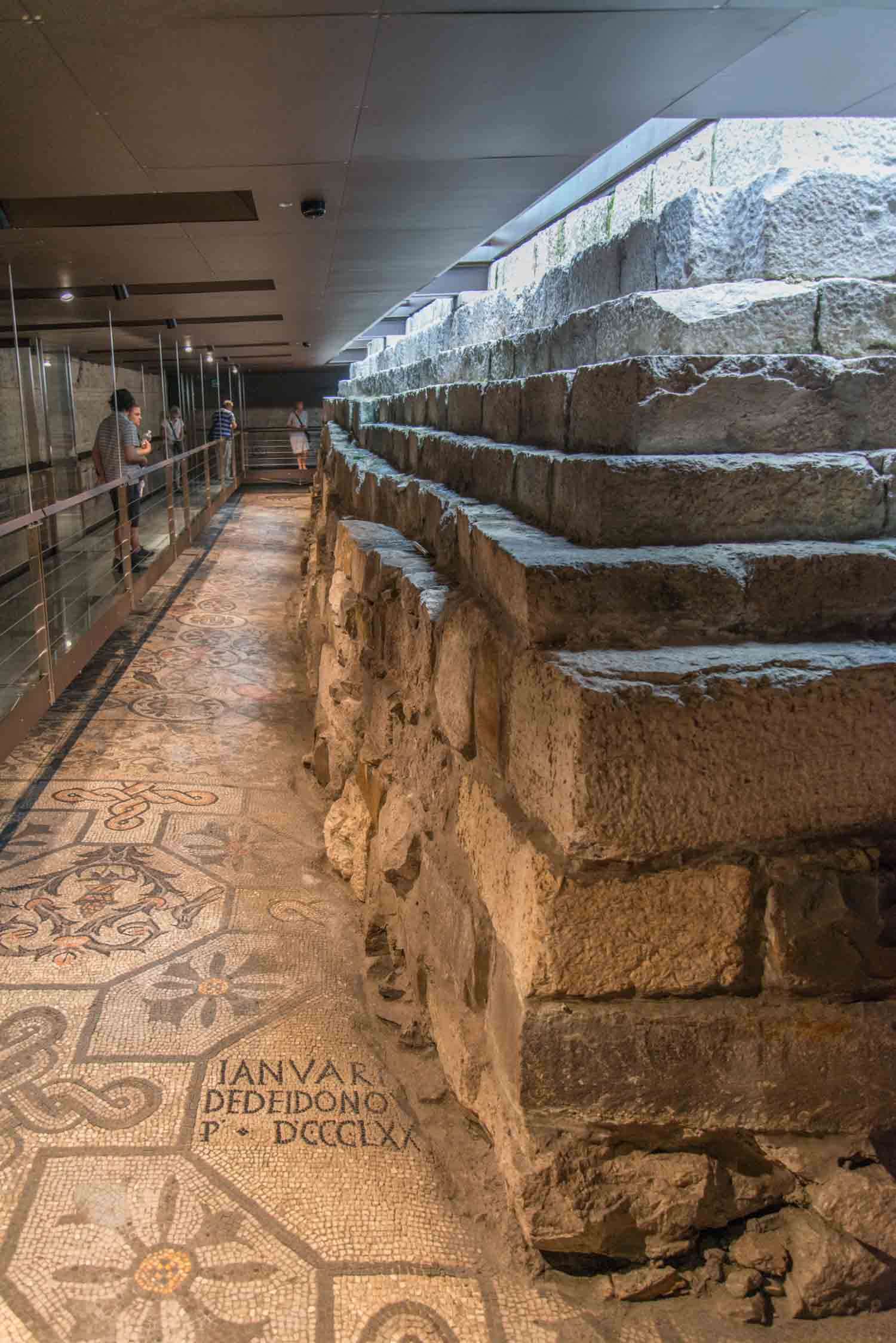
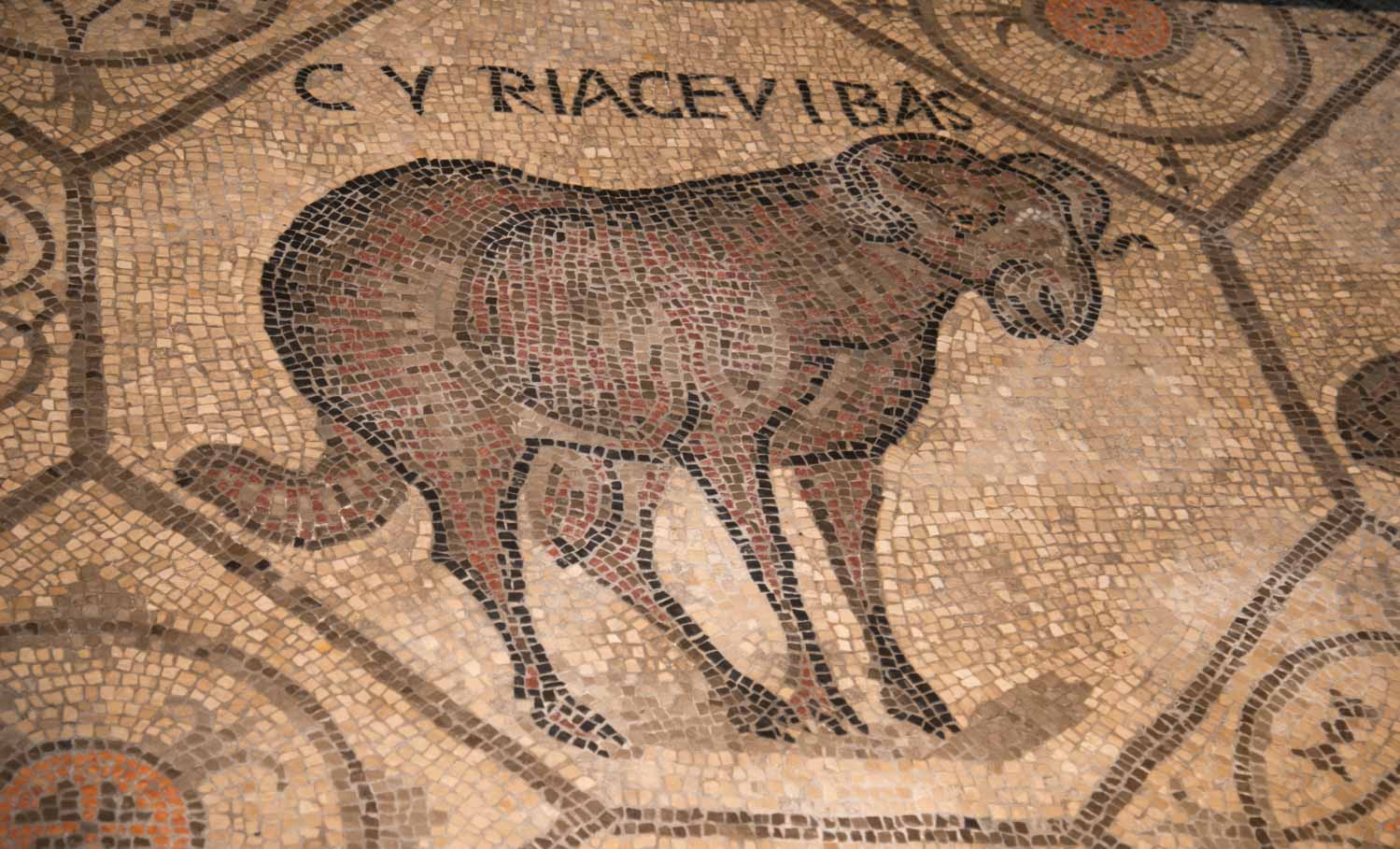
While Sarah returned to Basil I went on to the National Museum of Archeology, which, in my opinion, had the most wide ranging and best labelled collection of Roman artefacts I have ever seen. There were the obvious statues, fantastically delicate mosaics, inscribed tablets and funerary monuments, but it was the day to day items which were most fascinating. A complete Roman soldier’s helmet; weapons; glassware; a huge array of different pottery containers for traded goods; surveyor’s tools, which might have come from a modern set; some personal items, including gold embroidered cloth from a priestess’s grave; and on it went. An absolutely fascinating museum for anyone interested in ancient history.

As you can probably tell I’ve had a fantastic day and later I even managed to fit in a visit to a local vineyard to sample and buy some excellent local wine.
Tomorrow we move on into the mountains to the north.



